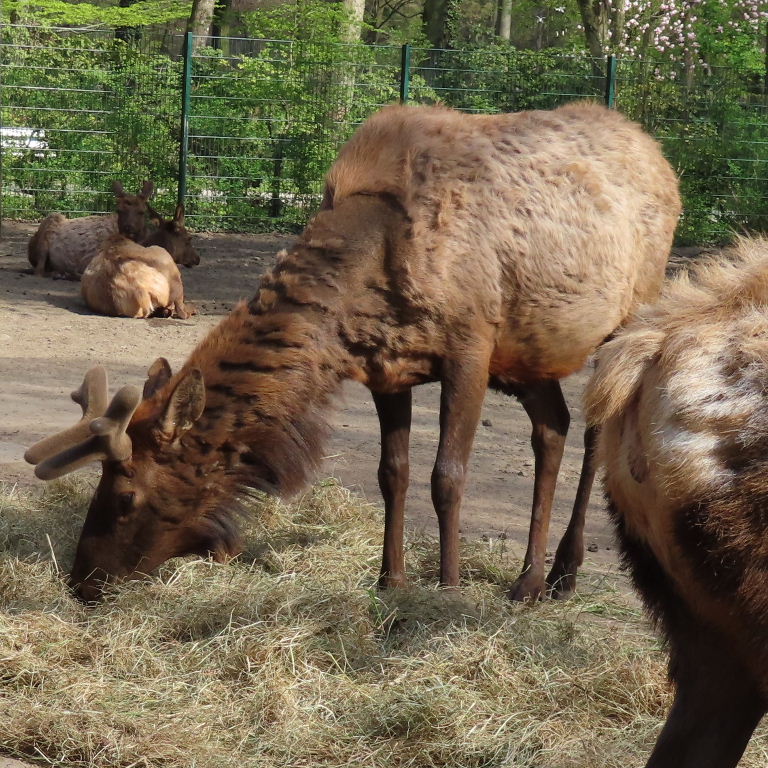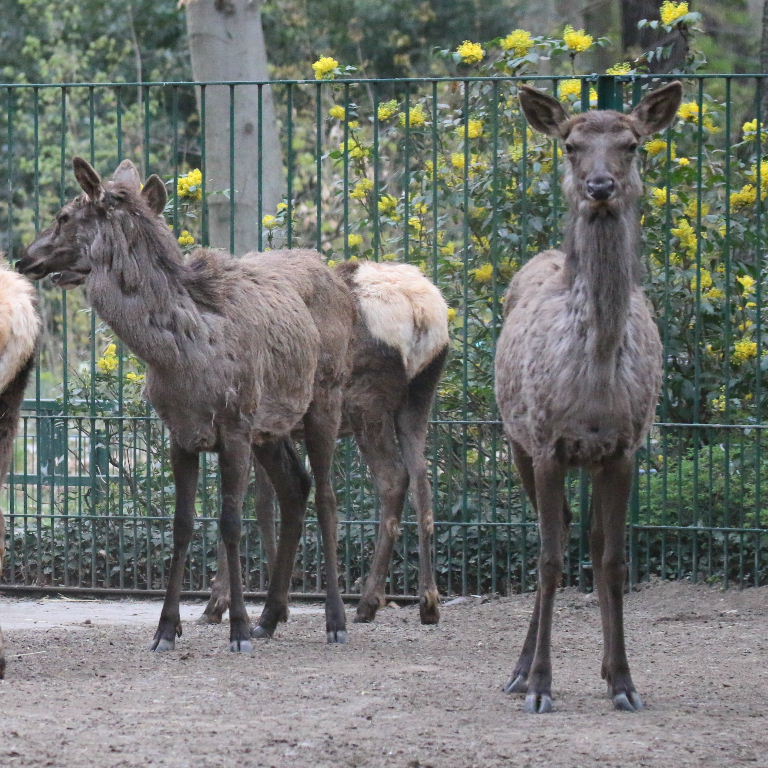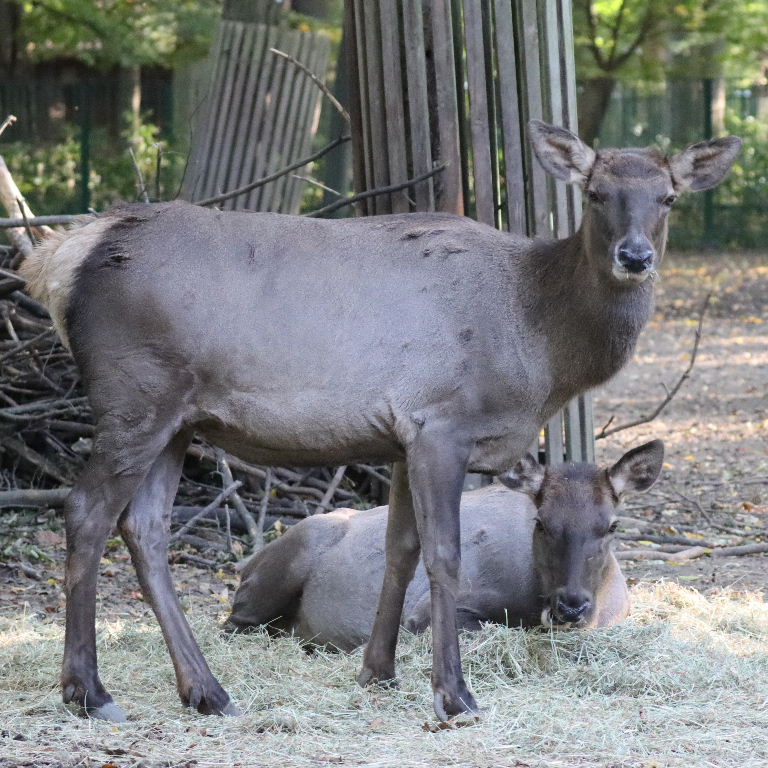Wapiti Cervus canadensis



Wapiti, the usual name in Eurasia, or Elk, the usual name in North America, are large deer native to North America
and northern Far East Asia. ("Elk" in Europe refers to the "Moose".)



They stand 4-5 feet at the shoulder (some 1.5 metres for adult bulls), smaller than the Moose
but taller than Reindeer and Sambar. These above are shedding winter coats.



They used to be considered as the largest subspecies of deer in the species
Cervus elaphus,
that including the Red Deer, but have since been split out to their own species.



The antlers, only on the male, are re-grown each year, the new growth being covered by "velvet" (above)
which carries blood vessels and is shed when the antlers are grown.



There are a number of subspecies in North America and Asia. The nominal subspecies (of North America)
is extinct. Many of the remaining American Wapiti populations have been decimated, mainly by hunting. Shown on this page
are the largest (tallest - 5 feet at shoulder) subspecies, Roosevelt's Wapiti, and one of the smallest, the Tule Wapiti of California,
both native to North America.



They live mainly in single-sex herds. During the rutting season, a bull will protect a harem
of females from rival bulls and, subsequently, the young from predators.



Those immediately above, in summer coats, are the Siberian or Altai Wapiti subspecies of eastern Kazakhstan
to the Russian Far East and northern China.

